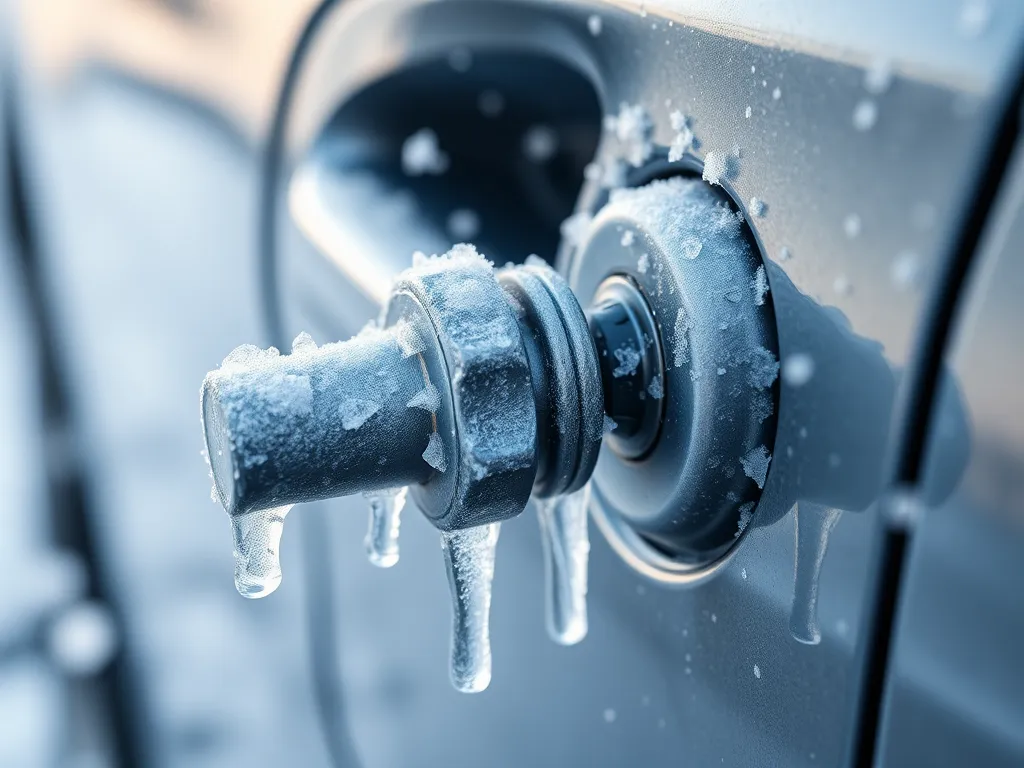Effective Solutions for Frozen Car Door Locks This Winter

A Comprehensive Guide to Car Maintenance
Car maintenance is essential for keeping your vehicle in peak condition and ensuring its longevity. Regular maintenance helps prevent minor issues from turning into costly repairs and ensures the safety of both the driver and passengers. By understanding the various aspects of car maintenance, owners can take proactive measures to care for their vehicles and efficiently manage their costs.
One of the key components of effective car maintenance is adhering to a regular service schedule. Manufacturers typically provide a recommended maintenance schedule that outlines when to perform specific services like oil changes, tire rotations, and brake inspections. Sticking to this schedule is critical in minimizing wear and tear, as well as identifying potential problems before they escalate.
Troubleshoot your frozen door lock with expert advice.
Additionally, performing routine checks such as monitoring tire pressure, inspecting fluid levels, and ensuring that all lights are functional can prevent unexpected breakdowns. These straightforward checks save time and money in the long run by enhancing the vehicle’s reliability. Car maintenance isn't just about mechanical work; it also involves care for the interior and exterior of the vehicle to maintain its overall value.
Seasonal preparations should also be part of your car maintenance plan. This might include winterizing your car by replacing wiper blades, checking battery health, and ensuring antifreeze levels are adequate. In contrast, summer might call for inspecting air conditioning systems and checking for leaks. Adaptations to maintenance practices according to season can drastically improve performance and comfort.
In conclusion, car maintenance is a multifaceted importance that ensures vehicle reliability, safety, and performance. By committing to a regular maintenance schedule, performing routine checks, and adapting to seasonal changes, vehicle owners can keep their cars in optimal condition for years to come.
Learn how to replace your car door lock efficiently.
Causes of Frozen Car Door Locks
Understanding the effects of temperature on car locks is crucial. When temperatures plunge, the metal components of door locks can contract, resulting in tight fits that may cause them to jam. Extreme cold can also affect the internal mechanisms of locks, making them less functional as they get stiffer and more resistant to turning.
Discover tips on how to open a frozen car door.
Moisture accumulation is another critical factor that contributes to frozen car door locks during winter months. Water that seeps into the locks can freeze and create a solid barrier that may render the locks unusable until the ice is melted. This is common in regions with heavy snowfall and fluctuating temperatures, where the moisture levels change frequently.
Common mistakes leading to frozen locks include failing to dry wet locks or leaving the car exposed to the elements without any protective measures. Ignoring such precautions can quickly lead to the frustrations of a frozen lock, leaving drivers stranded or late for appointments.
Preventive Measures to Avoid Frozen Locks
Using lubricants on door locks before winter sets in can serve as an effective preventive measure. Lubricants can create a barrier that prevents moisture from penetrating the lock mechanism, thus minimizing the risk of freezing. It’s essential to choose the right type of lubricant specifically designed for automotive locks.
Parking strategies can also significantly reduce the chances of experiencing frozen locks. Whenever possible, utilize a garage or indoor facility to shield your car from severe cold. When parking outdoors, choose a spot that gets sunlight during the day to help maintain a warm temperature around your vehicle.
Installing heated locks is another innovative solution to consider. Heated door locks work by utilizing a small heating element within the lock to prevent ice from forming. Though this may involve a higher initial cost, the convenience of never dealing with frozen locks can be well worth the investment for many drivers.
Immediate Solutions for Frozen Door Locks
If you find yourself facing a frozen door lock, one safe method is to pour hot water over the lock. Be careful not to use boiling water, as that can crack the lock or the glass. Warm water is effective in melting the ice without the risk of thermal shock.
Another technique for thawing locked doors is to use a hair dryer. Setting the hair dryer to a low heat and directing the warm air onto the lock can quickly thaw frozen components. Ensure you maintain a safe distance to prevent damage to the car's paint or materials.
Applying de-icer products can also be a swift solution to frozen locks. These products are specifically designed to melt ice and may come in spray form or as a liquid solution. Ensuring you have de-icer on hand during winter months can eliminate unnecessary delays when you're in a rush.
Long-term Care for Car Door Locks
Regular maintenance is vital for the longevity of car door locks. Best practices include periodic lubricating of locks with suitable products, as well as regular inspections for any rust or debris that may accumulate. Keeping locks clean and functional will prevent freezing and other malfunctions.
Choosing the right lock lubricant is crucial. Opt for a graphite-based lubricant for optimal performance. Unlike oils, graphite resists attracting dirt and moisture, ensuring your locks remain free of gunk and functional even in harsh weather conditions.
Be attentive to signs that your locks may need replacement, such as difficulty in turning the key, unusual noises when locking or unlocking, or if the lock fails to engage altogether. Addressing these indicators promptly can save you from being locked out in the future.
Emergency Steps If Frozen Lock Causes Lockout
If you are locked out of your car due to a frozen lock, there are ways to unlock it without causing damage. Use slim jims or other non-intrusive tools to unlock the door mechanism if you have experience. This method is less likely to damage the car than brute force techniques.
Keeping essential tools in your car, like de-icer spray, a small lock lubricant, or a slim jim, can be beneficial in emergencies. These tools can help you take immediate action should you face any lock-related issues during cold weather.
Lastly, if all else fails and you cannot unlock the frozen door, calling for professional help might be necessary. Emergency locksmiths can often provide quick, accessible solutions to unlock your vehicle without causing damage, ensuring you can get back on the road swiftly.
